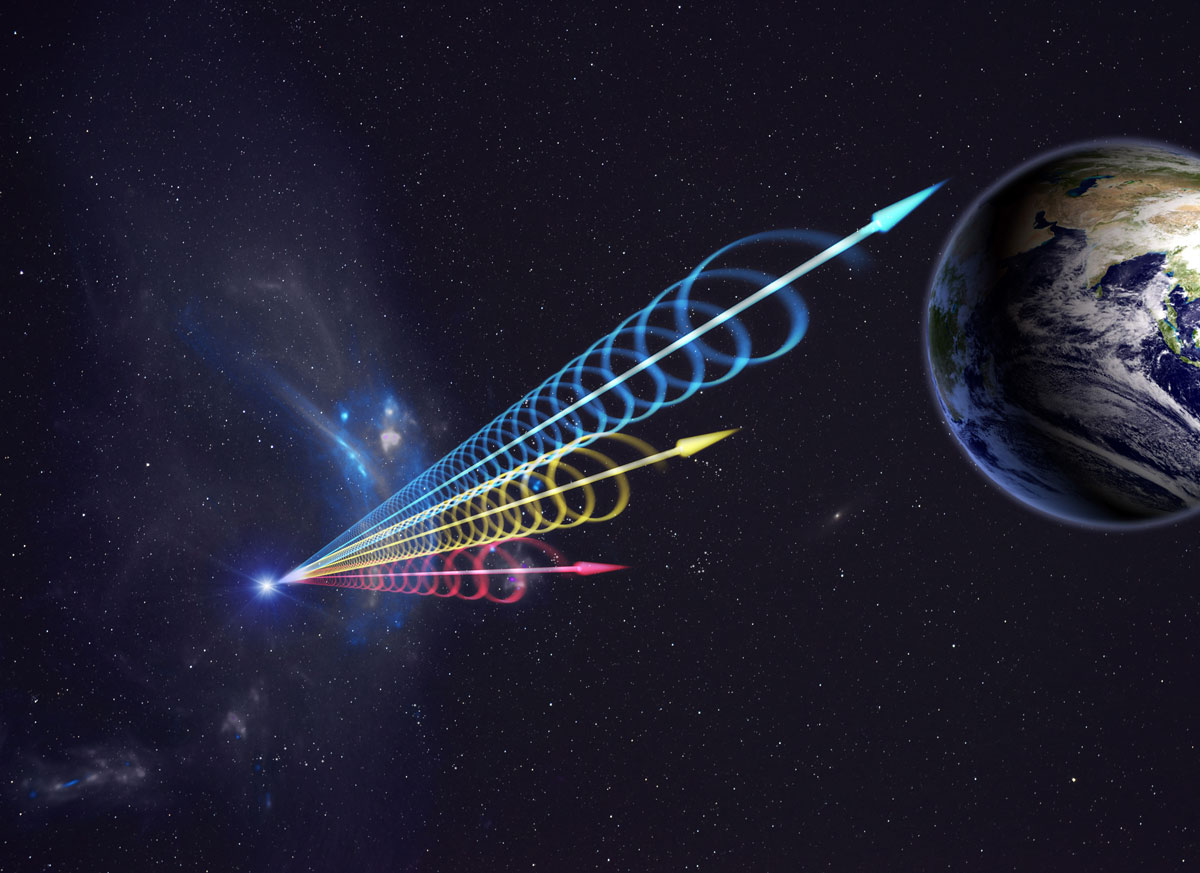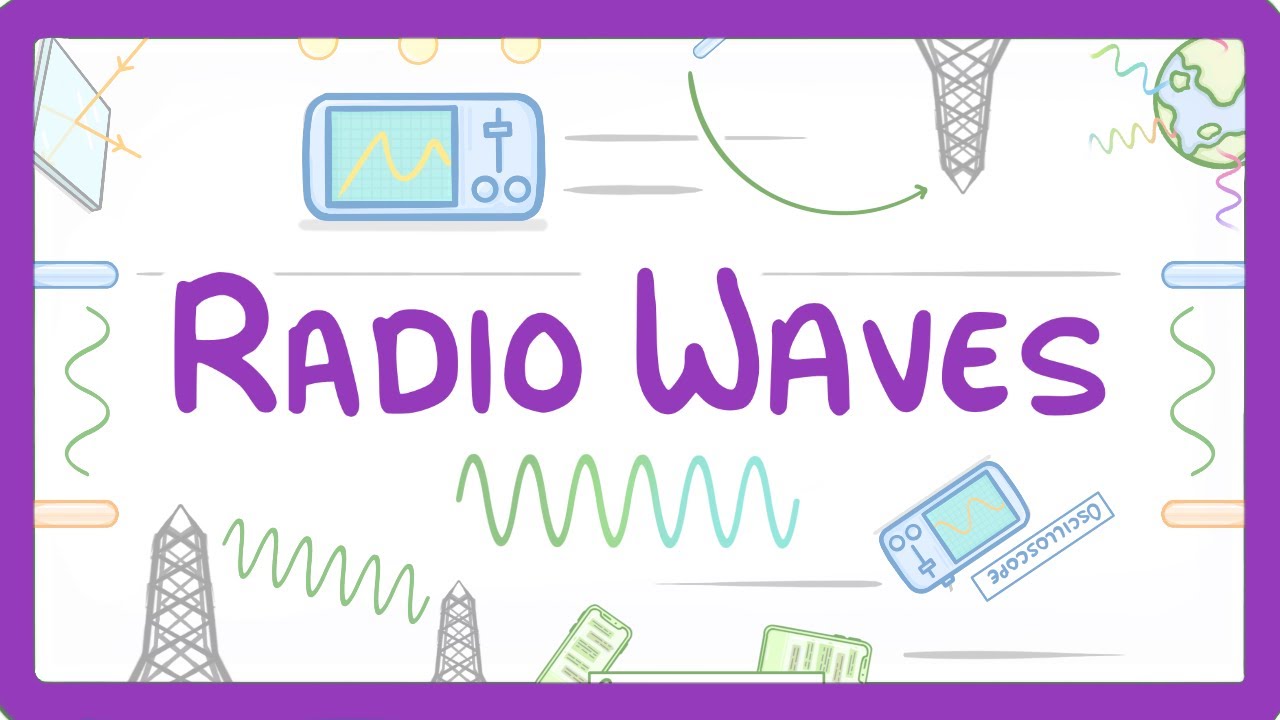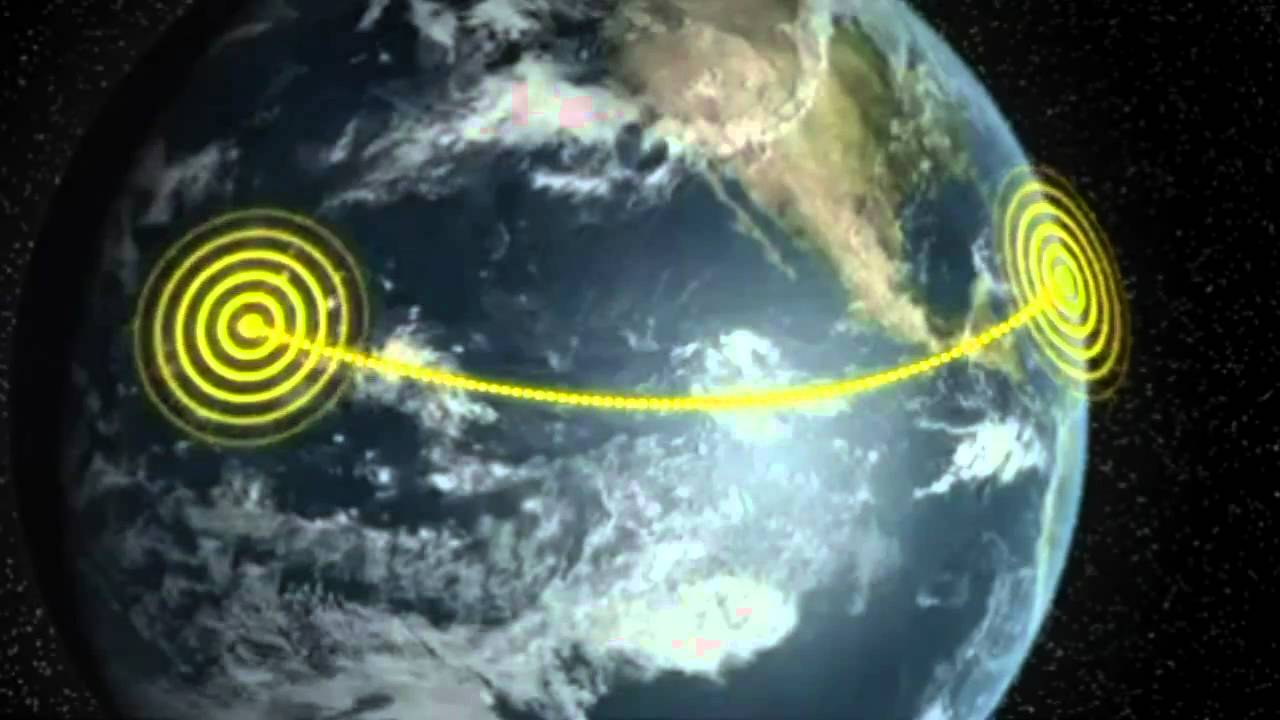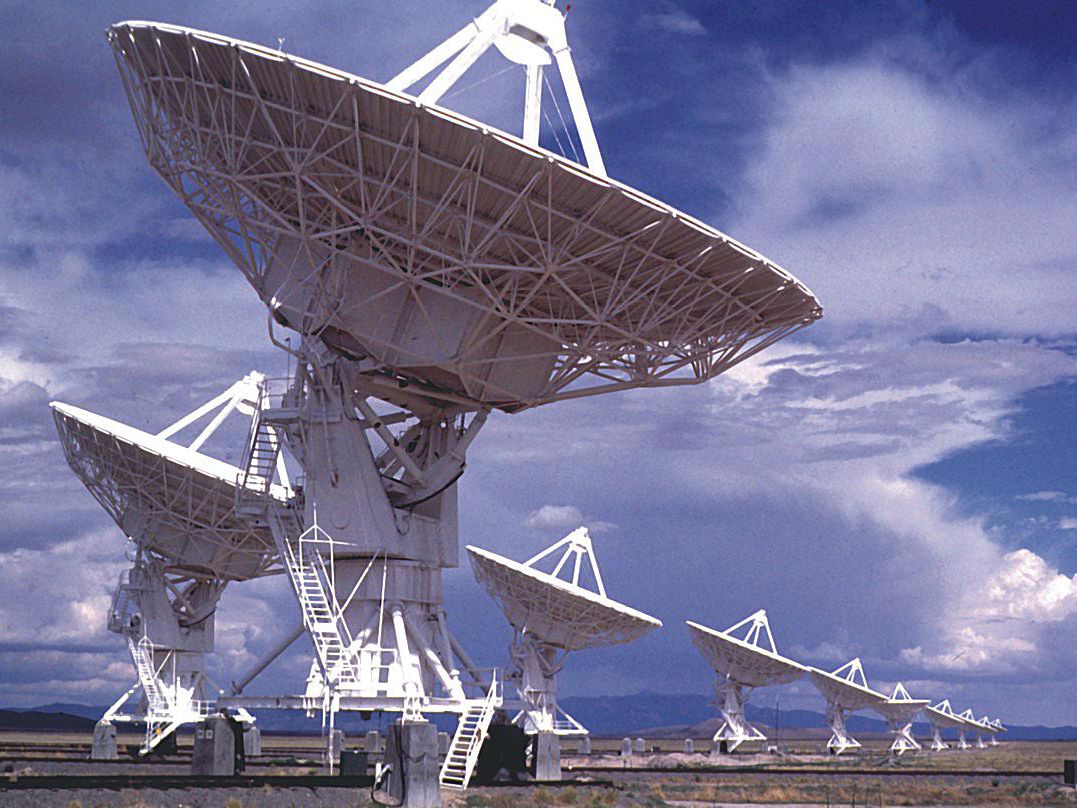Radio Waves - What They Tell Us About The Universe
Stars shine brightly in the night sky, illuminating the darkness above us. Millions of them can be seen if you avoid bright lights and live in a remote area. The closest stars appear as discrete dots.
Author:Suleman ShahReviewer:Han JuMar 08, 202385 Shares1.5K Views

Stars shine brightly in the night sky, illuminating the darkness above us.
Millions of them can be seen if you avoid bright lights and live in a remote area.
The closest stars appear as discrete dots.
Our Milky Way galaxy has an estimated 100 billion more stars.
Your eyes can't detect the faint light emitted by these stars, so you can't see them.
Your eyes can only see a small fraction of the electromagnetic spectrum.
Gamma rays, X-rays, ultraviolet rays, infrared rays, microwaves, and radio wavesare all part of the electromagnetic spectrum.
Since we can only see visible light, we have to build special telescopes to pick up the rest of this "spectrum," which is then turned into images and charts that we can see.
What Are Radio Waves?
A class of electromagnetic radiation known as radio waves is most commonly used in communication devices like radios, televisions, and mobile phones.
These gadgets take in radio waves and transform them into sound waves by causing mechanical movements in the speaker.
A relatively minor portion of the electromagnetic (EM) spectrum is the radio-frequency spectrum.
According to the University of Rochester, the electromagnetic spectrum is often split into seven sections in an ascending sequence of decreasing wavelength and rising energy and frequency.
Radio waves, microwaves, infrared (IR), visible light, ultraviolet (UV), X-rays, and gamma-rays are some of the common names for these types of energy.
According to NASA, radio waves have the longest wavelengths in the electromagnetic spectrum, with values between 0.04 inches (1 millimeter) and more than 62 miles (100 kilometers).
They also have the lowest frequencies, which range from 3 kilohertz, or 3,000 cycles per second, to 300 gigahertz, or 300 billion hertz.
If we only used our eyes or telescopes that sense visible photons, radio waves would inform us about areas of the universe we would not even be aware existed.

GCSE Physics - Radio Waves #65
Radio Pioneers
The first radio astronomer was not the first intentionally.
In 1933, Karl Jansky worked on a project for Bell Laboratories, a place in New Jersey named after the man who invented the telephone, Alexander Graham Bell.
The first phone system that functioned over the Atlantic Ocean was being developed there by engineers.
When users first attempted to use that system to make phone calls, they occasionally heard a hissing noise in the background.
Bell Labs sent Karl Jansky to investigate the noise because they believed it was detrimental to their operations.
He soon realized that the hiss started when the center of our galaxy rose in the sky and terminated as it set (everything in the sky rises and sets just like the Sun and Moon do).
He found out that the hiss was caused by radio waves that were coming from the center of the galaxy and messing up the phone line.
He had picked up radio waves coming from space, as had the phone.
A brand-new, unseen cosmos was unlocked by Jansky.
Because of Janksy's study, Grote Reber, who lives in Illinois, built a radio telescope in his garden.
In 1937, he finished the 31-foot-wide telescope and used it to look at the whole sky and figure out where radio waves come from.
He then created the first map of the "radio sky" using the information he had gathered with his radio telescope.
Wavelength And Frequency
These radio photons are used by radio astronomers to study the invisible universe.
Photons move in waves, like a roller coaster that keeps going back and forth between the same two parts of track.
You can determine a photon's energy by looking at its wavelength, or wavelength.
The energy in a wave varies depending on its length; a long wave has less energy, while a short wave has a lot.
Since radio waves have low energy, they move in broad waves with long wavelengths.
Radio waves can range in size from a few millimeters to many hundreds of feet.
The "frequency" of a radio wave refers to how many of these waves pass a particular point per second.
Frequency can be thought of as a body of water.
The pond ripples when you throw a rock into the water.
Your ankles will be struck by the waves if you stand in the water.
The frequency of the waves is determined by how many of them hit you in a second.
The unit 1 Hertz denotes one wave per second. One MHz is one million waves per second.
Long waves have smaller frequencies since there are fewer of them hitting you every second.
Long wavelengths and low frequency characterize radio waves.
Low To Medium Frequencies
ELF radio waves, which have the lowest frequency of all radio waves, are great for talking to submarines because they can go through rock and mines and have a long range.
Lightning is the most potent natural generator of ELF and VLF waves.
Lightning strikes can generate waves that bounce between Earth and the ionosphere (the atmosphere layer with a high concentration of ions and free electrons).
These lightning strikes could mess up the important radio signals being sent to satellites.
Marine and aviation radio, as well as commercial AM (amplitude modulation) radio, are all broadcast on the LF and MF radio bands.
The 535 kilohertz to 1.7 megahertz range is the AM radio frequency range.
AM radio is prone to interference, which makes the sound quality worse, but it has a long range, especially at night when the ionosphere is better at reflecting the waves back to earth.
When a signal is partially blocked, like by a skyscraper or other building with metal walls, the sound is not as loud.

Electromagnetic Spectrum: Radio Waves
Higher Frequencies
FM radio, broadcast television audio, public service radio, mobile phones, and GPS all operate on the HF, VHF, and UHF bands.
Frequency modulation, or FM, is often used in these bands to add an audio or data signal to a carrier wave.
In frequency modulation, the signal's biggest size (amplitude) stays the same while the frequency changes at a rate and size that match the audio or data stream.
Because environmental influences do not affect frequency in the same way that they do amplitude, and because the receiver ignores amplitude variations as long as the signal remains above a minimum threshold, FM yields higher signal quality than AM.
The range of FM radio frequencies is 88 to 108 megahertz.
Shortwave Radio
The National Association of Shortwave Broadcasters (NASB) states that HF frequencies between 1.7 and 30 megahertz are used for shortwave radio.
Within this range, the shortwave spectrum is broken up into different bands, some of which are used by traditional radio stations like the Voice of America and the British Broadcasting Corporation.
According to the NASB, there are hundreds of shortwave stations in existence worldwide.
Because the signals from shortwave stations bounce off the ionosphere and return hundreds or thousands of kilometers from their point of origin, they can be heard thousands of miles away.
Highest Frequencies
SHF and EHF are the highest radio frequencies. They are often called "microwave band" frequencies because they are in that range.
These frequencies tend to be taken in by molecules in the air, which limits how and where they can be used.
But because their wavelengths are short, radio waves can be focused by parabolic dish antennas (also called satellite dish antennas) into very narrow beams.
This makes it possible for stationary places to communicate over short distances at high bandwidth.
SHF is used for short-range applications like Wi-Fi, Bluetooth, and wireless USB. It is less affected by air than EHF (universal serial bus), which is used for long-range applications.
According to the RF Page, SHF can only operate in line-of-sight paths since the waves tend to bounce off of things like vehicles, boats, and airplanes.
SHF can also be utilized for radar because the waves bounce off of objects.
Radio Telescope Talk
Since your eye is relatively small and visible-light photons move in relatively short waves, you are able to perceive this type of light.
However, a radio wave detector would require a large eye since radio waves are so large.
Because of this, radio telescopes are much bigger than regular telescopes, which are only a few inches or feet across.
West Virginia's Green Bank Telescope spans more than 300 feet in diameter.
The Arecibo Telescope, located in the Puerto Rican jungle, measures nearly a kilometer in diameter.
Even though they look different, these telescopes work the same as regular telescopes, but on a much larger scale.
A standard telescope is used by directing it toward an astronomical target.
The light from the object is reflected off a mirror or lens, and then reflected off yet another mirror or lens before finally reaching your eye or the camera.
When an astronomer points the telescope at something in space, radio waves from space hit the surface of the telescope.
The surface, which might be solid metal like aluminum or metal with pores like mesh, reflects radio waves.
They are reflected back up to a second "radio mirror," and from there they are reflected into an astronomical "receiver."
The radio waves are converted into an image by the receiver, which functions like a camera.
Radio Vision
When astronomers look at the universe through radio waves instead of traditional visible light, they see different things and events.
Radio waves can see clearly into regions that appear dark to our eyes or traditional telescopes.
As an example, star formation regions are extremely dusty.
This place is in total darkness since the dust prevents any light from reaching our eyes.
However, when astronomers point radio telescopes in that direction, they can see clearly through the dust and witness the birth of a star.
Massive clouds of gas in space are the birthplace of new stars.
The gas first forms clumps.
Afterward, more and more gas is drawn to the clump because of gravity.
The mass swells and becomes increasingly sweltering.
Once it gets big enough and hot enough, it will begin to smash hydrogen atoms together, which are the tiniest atoms that can exist.
Hydrogen atoms collide to create helium, a slightly larger atom.
Then this ball of gas is officially classified as a star.
These infant stars are captured in stunning detail by radio telescopes.
Even the closest star can have its secrets revealed by a radio telescope.
Light from the Sun's surface, where temperatures average around 9,000 degrees Fahrenheit, is where our eyes perceive the star.
However, the air is hotter than 100,000 degrees Fahrenheit farther up.
We can learn more about these radioactive regions thanks to radio telescopes.
Planets in our solar system have their own radio shows and stars.
We can see the swirl of gas around Uranus and Neptune by using radio telescopes.
Jupiter's northern and southern poles glow brightly in radio waves.
In order to create a map of Mercury nearly on par with Google Earth, we must first transmit radio waves in its direction and then use a radio telescope to pick up the radio waves that return.
People Also Ask
What Produces Radio Waves In The Universe?
The universe is filled with radio waves.
Planets, stars, and even strange things like pulsars and black holes, as well as galaxies and, of course, human technology, all help make them.
According to astronomers, they have picked up some new and peculiar radio wave transmissions.
Does The Universe Emit Radio Waves?
When we turn our attention away from the Milky Way, we see that the cosmos is populated with potent but far-off radio sources.
These are the active galaxies, or more precisely, the massive "radio lobes" that these galaxies generate.
How Do Radio Waves Work In Space?
In reality, radio waves may cover vast distances in a short amount of time.
As a form of electromagnetic radiation, radio waves travel at the speed of light.
Light travels at a little under 300,000 kilometers per second.
A beam of light traveling at that speed could circle the globe seven times in one second if it were to start at the equator.
Can We See Radio Waves In Space?
Light can also come in the form of radio waves, microwaves, infrared radiation, ultraviolet rays, X-rays, and gamma rays, all of which are invisible to the human eye.
All electromagnetic energy, including visible light, travels across space at the speed of light, which is approximately 186,000 miles (300,000 kilometers) per second.
Conclusion
We would be losing out on a lot of the action in the cosmos if we could just use telescopes that detect visible light.
Think about how hard it would be for doctors if they could only use stethoscopes.
It would give them a wealth of information about the patient's heart.
However, if they also had access to diagnostic imaging tools like an MRI scanner, a CT scanner, or even a simple X-ray machine, they could learn a great deal more.
They could gain a clearer picture of what was going on within the patient's body with the help of such instruments.
To acquire a full picture of what's going on in the cosmos, astronomers employ radio telescopes that emit radio waves in addition to ultraviolet, infrared, optical, X-ray, and gamma-ray telescopes.

Suleman Shah
Author
Suleman Shah is a researcher and freelance writer. As a researcher, he has worked with MNS University of Agriculture, Multan (Pakistan) and Texas A & M University (USA). He regularly writes science articles and blogs for science news website immersse.com and open access publishers OA Publishing London and Scientific Times. He loves to keep himself updated on scientific developments and convert these developments into everyday language to update the readers about the developments in the scientific era. His primary research focus is Plant sciences, and he contributed to this field by publishing his research in scientific journals and presenting his work at many Conferences.
Shah graduated from the University of Agriculture Faisalabad (Pakistan) and started his professional carrier with Jaffer Agro Services and later with the Agriculture Department of the Government of Pakistan. His research interest compelled and attracted him to proceed with his carrier in Plant sciences research. So, he started his Ph.D. in Soil Science at MNS University of Agriculture Multan (Pakistan). Later, he started working as a visiting scholar with Texas A&M University (USA).
Shah’s experience with big Open Excess publishers like Springers, Frontiers, MDPI, etc., testified to his belief in Open Access as a barrier-removing mechanism between researchers and the readers of their research. Shah believes that Open Access is revolutionizing the publication process and benefitting research in all fields.

Han Ju
Reviewer
Hello! I'm Han Ju, the heart behind World Wide Journals. My life is a unique tapestry woven from the threads of news, spirituality, and science, enriched by melodies from my guitar. Raised amidst tales of the ancient and the arcane, I developed a keen eye for the stories that truly matter. Through my work, I seek to bridge the seen with the unseen, marrying the rigor of science with the depth of spirituality.
Each article at World Wide Journals is a piece of this ongoing quest, blending analysis with personal reflection. Whether exploring quantum frontiers or strumming chords under the stars, my aim is to inspire and provoke thought, inviting you into a world where every discovery is a note in the grand symphony of existence.
Welcome aboard this journey of insight and exploration, where curiosity leads and music guides.
Latest Articles
Popular Articles
